- This feature was published in RAIL 854 on June 6, prior to LNER replacing VTEC.
When it was introduced on the East Coast Main Line back in the late 1970s, the High Speed Train (HST) was described by British Rail as “the most significant event on the Edinburgh-Newcastle-London main line for decades”.
In its launch brochure, BR said the HST provided “a standard no other railway in the world will offer you”. It might just as easily have been describing the air-conditioning on the new trains, but for many it described the trains themselves.
Forty years on and the ECML is again in the news, following Secretary of State for Transport Chris Grayling’s decision to kill the Virgin Trains East Coast deal and (effectively) renationalise the franchise by introducing an Operator of Last Resort (OLR). This will remain in place until 2020, when the new East Coast Partnership is under way.
While these major changes take place, passengers will continue to use the reliable, dependable HSTs that had first been introduced on the line in 1977, and which enabled an accelerated 125mph timetable from May 8 1978.
One of the OLR’s major jobs will be to introduce Class 800/801 Intercity Express Programme (IEP) trains that have been ordered and specified by Government, and which will enter traffic this December, initially running between Hull, London King’s Cross and Leeds.
The IEPs are designed to replace the HSTs. The first ‘800’ arrived in the UK on March 12 2015, some 12 days after the Stagecoach/Virgin VTEC franchise was launched, and yet the first ‘800’ will not enter passenger service on the ECML until almost six months after VTEC has ceased to exist.
The IEPs will indeed ensure that HSTs are withdrawn from ECML expresses - eventually. The new Hitachi trains will initially see off a few Class 91/Mk 4 IC225 sets that will be withdrawn from early 2019, but in an exclusive interview with RAIL on May 8, VTEC Managing Director David Horne told RAIL that “significant withdrawals” of HSTs will not take place until the final quarter of 2019.
That will be when the new trains are introduced on routes on which the diesels currently run, combined with Network Rail’s ability to upgrade electrification on parts of the route. The final IC225s will be withdrawn in just under two years’ time… if all goes to plan.
The first High Speed Trains had actually been introduced two years earlier, on the Great Western Main Line, with 125mph running beginning in October 1976.
Steve Hoather was one of the Project Engineers on the Eastern Region when the HSTs were introduced. His role today would be a project manager.
He explains that the official handover of HSTs was in September 1977, ahead of the accelerated timetable beginning on May 8 1978.
“The concept of HST was great. Western Region had them first, and so any problems were found on them. There was a huge difference with these compared with conventional trains, and that took some getting used to.”
He also recalls some of the early problems encountered. Coaches uncoupled at speed, power car wheelsets seized, and one set had 66 windows smashed in one night. Then there were six signals passed at danger due to snow and braking problems. All these problems were resolved, but created headaches for Hoather and his team. Did he think they would survive the test of time?
“We joked that some idiot would want to preserve some. At the time, you don’t think like that.”
Hoather has visited the new Hitachi Rail Europe depot where the IEPs will be maintained. This is similar to the introduction of HST-specific depots.
“The HST depots were as clean as that, but Doncaster looks very new. What is impressive is the equipment - bogie drops and synchronised jacks. They would have helped us with HST when it was introduced.”
Will IEP do as well as HST?
“I would hope it does as well,” he replies.
Noel Proudlock was part of the HST Project Implementation Team. He tells RAIL: “They can still do what they were designed to do 40 years ago.
“When the HSTs were coming, the Eastern Region wanted a Steering Group. They decided to look after all the sets and monitor the testing, and so on. There was the high-speed implementation, and that was me.
“I started in 1977, and the Western Region sets were coming for testing and commissioning on the ECML. I gave myself permission to ride them as I was part of the operations. I could see what was good, and what needed work.”
Proudlock confirms that the plan was for the HSTs to be in fixed formations. However, he knew that wouldn’t work, and recalls phone calls at 0500 from Bounds Green, asking permission to switch vehicles as there had been a failure.
“I was told that they were to be maintained as fixed formations, and it was intended the power cars would stay with the set. But to me it was a locomotive-hauled train with locomotives at each end, and I knew the plans would not happen.”
The HST was described in the Inter-City 125 Review published in March 1978 as ‘The Journeyshrinker’, with British Rail pointing out that Newcastle was “a mere three hours and four minutes from London, Edinburgh just under five hours”.
Average journeys would be reduced by as much as 20%, said BR, with even faster journeys possible. It also allayed fears of rising costs, almost as if passengers would expect higher fares for this improved service.
“To travel by Inter-City 125 costs no more than conventional trains,” it said. “And as well as the standard fares all your money-saving offers - Awayday, Economy, Weekend and Monthly Returns - are available, too.”
The HST, it said, “is our brand new high-speed, high-comfort train that opens a new dimension to long-distance travellers”.
The review highlights that in 1973 the prototype HST had reached 143mph between York and Darlington, a record for a diesel train. That was later beaten on November 1 1987, when 43102 reached 148.5mph on the same stretch.
BR used the record in its material, to proclaim that the “world-beater” was being introduced. The North East and Edinburgh were due to receive them first, followed by the West Riding and (late) Aberdeen.
BR Chairman at the time was Peter Parker. He was confident of the success of the new trains, stating: “In the 1960s, British Rail began a programme to improve the speed and comfort of trains travelling between main cities and towns. The product was named ‘Inter-City’.
“Within ten years, the number of passenger journeys on the Inter-City routes had increased by 30%, proving that people react dramatically and positively to faster, more comfortable services.”
Parker said the ‘125’ was the next important chapter in the IC success story, and pointed out how it had captured headlines with its speed. He also highlighted the quality afforded to passengers: “It has more special features designed for the benefit of passengers than any train has ever had before.”
The Eastern Region HSTs were numbered 254001-254032. Deliveries had begun in July 1977, when 254001 arrived at Bounds Green. Following crew training, they began entering passenger service on the East Coast Main Line, although some were loaned to the Western Region for its HST services.
The HSTs were used alongside the Class 55 Deltics, as well as Class 46s and ‘47s’ on ECML passenger trains.
By May 1978 there were 18 sets delivered, although to ensure reliability the Eastern Region had rostered just six HSTs for the new timetable. These covered six trains in each direction, and the duties were simple, with an out and back from their home depot: three HSTs from Edinburgh, two from London, and one from Newcastle.
One of the trains that was HST-operated was the ‘Flying Scotsman’, which had 38 minutes shaved from the Up direction train and 35 minutes from the Down train.
As more catering vehicles were delivered, so more HSTs entered traffic through the summer of 1978. The first Aberdeen trains ran in October 1978.
The full service introduction was planned for May 1979, but the Penmanshiel Tunnel collapse on March 17 1979 forced its postponed until autumn 1979, with the need for lengthy diversions because the ECML was closed between Berwick and Edinburgh.
The HST you travel on today on the ECML is very different from that introduced in 1978, and yet passengers today talk of its comfort and the fears they have regarding the IEPs. This fear stems from comments made by many (but not all) who have travelled on the Great Western Railway Class 800 fleet.
In 1978, the HSTs were replacing locomotive-hauled trains that featured Mk 1 and Mk 2 coaches. The Mk 3, according to BR, was “built for high speed in effortless comfort”.
Wider outside doors were designed to improve access for those with luggage, while the vestibules were carpeted and brighter than before. There was better draught and sound insulation which would make the saloon quieter, according to BR. A “modern, hygienic” toilet could be found at each end of the coach, while automatic inner doors were “great for when you’re laden with luggage, or when carrying refreshments from Buffet Bar 125”.
BR described the coaches as “spacious and airy” with that ambience and atmosphere enhanced by the extra length of a Mk 3. They also had “picture windows, wall-to-wall carpeting and bright colouring”, plus more luggage room.
But what of the seat itself? BR said it was “designed by medical, ergonomic and industrial design experts, a superb combination of relaxed comfort and good looks”. Each seat has an armrest (which didn’t move), and individually shaped cushion and headrest. In First Class, the seats reclined.
The air-conditioning on the stock was designed to always remain at 21°C, which was made possible by a complete change of air every four minutes.
Even the sound was considered. Double-glazing and noise insulation was included, as were vibration-free body panels, which BR said provided the Mk 3s with a 65dBA sound reading at 125mph compared with 69dBA at 90mph for a Mk 2. It added that the air-sprung bogies “keep you floating literally on cushions of air. The smoothest ride on rails.”
Says Proudlock: “I didn’t think they would last this long. In a sense, there was always change. Steam to diesel, to more powerful diesels.
“Now they are off to Scotland and that’s because people love travelling in them.
“But I’m sure IEP will be perfectly alright.”
VTEC Managing Director David Horne tells RAIL that around 30% of all his passengers use HSTs, and that they were currently operating at the most reliable they have ever been. The bar has been set.
How to ensure a comfortable ride
David Russell was Mechanical & Electrical Engineer (Locomotive), C.M. & E.E. Department, York, at the time the HSTs were introduced on the Eastern Region. In the IC125 Review, he explained how a comfortable 125mph was achieved from the engineer’s view.
“August 1970 saw a start made on an urgent and exciting new project at the Railway Technical Centre in Derby. A 125mph high speed diesel train. High speed, that is, but with standards of comfort so high that passengers would hardly notice the speed.”
Russell explained that reaching that speed needed high power, but had to be done economically and without damaging the track, so a low weight was required. Engineers examined options, while also considering the likely high costs and the rising cost of both maintenance and fuel.
Two quick-running high-power 2,250hp 12-cylinder diesel engines were selected, each in a power car. The electric power they generated was fed into four powerful electric motors in each power car. They powered the bogies via a flexible drive. The welded steel body structure was aided through the use of computer modelling, while the cab was an aerodynamic glass fibre creation and described as “complex”. The windscreen was designed to withstand the impact of a 2lb brick at 190mph.
There was also a need to be able to stop the 125mph trains in the same distance as a 100mph locomotive-hauled train, and so this was built into the specification.
Highly efficient compressed-air disc brakes were fitted and controlled electrically from the cab. Air-sprung bogies were also fitted, which Russell says were key to the smoothness of the ride.
The power cars
High Speed Trains built for the East Coast Main Line were delivered as 254001-254032. Those delivered to the Great Western Main Line were delivered as 253001 onwards.
The plan had been for the trains to remain permanently coupled, although in the end that did not happen.
The first ‘254’ delivered (to Bounds Green in July 1977) featured power cars 43056/057. Each ‘254’ featured two power cars and eight Mk 3s.
From May 8 1978, the 125mph running on the ECML took effect, with 18 sets delivered. Only six were diagrammed for traffic instead of the planned eight, as not enough catering vehicles were available.
The allocation of sets was varied, with Bounds Green receiving six sets (254001/004/006/010/026/030) in July, September, October, December 1977, November 1978 and March 1979 respectively. The power cars were 43056/057/062/063/066/067/074/075, 43106/107/114/115.
The largest allocation was for Neville Hill, which received 13 HSTs (254003/007-009/011/015/023-025/027/029/031/032) between August 1977 and April 1979. The power cars were 43060/061/068-073/076/077/084/085, 43100-105-108/109/112/113/116-119).
The smallest allocation was Craigentinny’s four sets (254013/017-019 that featured 43080/081/088-093), which were delivered in February and May 1978.
The remaining nine sets (254002/005/012/014/016/020-022/028) went to Heaton between August 1977 and April 1979. They featured power cars 43058/059/064/065/078/079/082/083/086/087/094-099, 43110/111.
Two spare power cars were built for the Eastern Region fleet (43122 for Neville Hill and 43123 for Bounds Green). These were delivered in April 1979 but built out of sequence, as 43120/121 were delivered to the Western Region as spare power cars. Some Eastern Region sets had also been used on the Western Region, prior to introduction on the ECML.
Today, many of the power cars remain on the ECML with Virgin Trains East Coast. They will become part of the London North Eastern Railway fleet, although they’re due for withdrawal by the end of next year.
‘254’ power cars still forming part of the ECML HST fleet are 43057/072/074/077/090/095/096/099, 43100/102-105-110 (all have had 200 added to their original number).
Others can be seen on the ECML working for CrossCountry (43085, 43101/103/104), while 43062 will appear as part of Network Rail’s New Measurement Train.
Five (43067/068/080/084, 43123) have recently left ECML open access operator Grand Central and transferred to East Midlands Trains, where they join former ‘254’ power cars 43058-061/064/066/073/075/076/081-083/089. It’s worth noting that while 43061/075 are nominally part of the EMT fleet, they are sub-leased to VTEC on a semi-permanent basis.
The other power cars (43056/063/069-071/078/079/086-088/092-094/097/098, 43122) are now all with Great Western Railway.
The first day’s sets
The 125 Group has sourced the sets used on the first day of the East Coast Main Line High Speed Trains.
Trains Power cars Stock
0732 Newcastle-King’s Cross, 1135 return 43058/059, 40031, 40502, 41059/060, 42115-118
0740 King’s Cross-Newcastle, 1350 return 43066/067 40036, 40506, 41067/068, 42131-134
0810 Edinburgh-King’s Cross, 1400 return 43072/082, 40034, 40509, 41073/096, 42143-146
1000 King’s Cross-Newcastle, 1610 return 43056/057, 40030, 40501, 41057/058, 42111-114
1010 Edinburgh-King’s Cross, 1600 return 43068/069, 40033, 40508, 41061/062, 42119-122
1110 Edinburgh-King’s Cross, 1700 return 43064/065, 40033, 40508, 41065/066, 42127/128/130/141
Power car facts and figures - 125 Group
Virgin Trains East Coast 43238 and 43239 are calculated to be the highest-mileage power cars of the entire UK HST fleet, at 9.725 million miles each by mid-2018.
Both were built in the first batch of HSTs and delivered to the Western Region in early 1977. They transferred to the ECML (where annual mileages have always been higher) in 1982, and have remained there ever since.
The average UK power car mileage is 8.48 million miles.
Within the VTEC fleet, 43305-43319 have been on the East Coast Main Line continuously since their delivery, and are calculated to have run 9.385 million miles each.
- The FULL feature was published in RAIL 854, available digitally on Android/iPad.

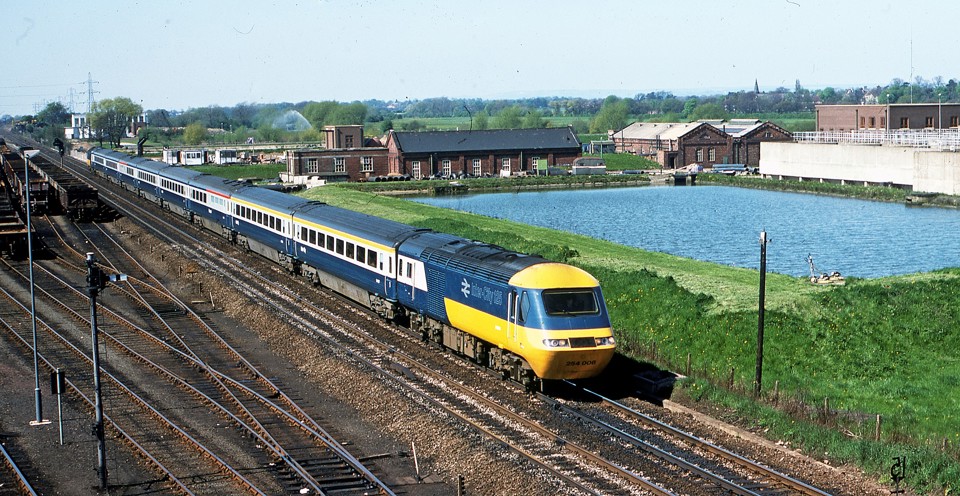
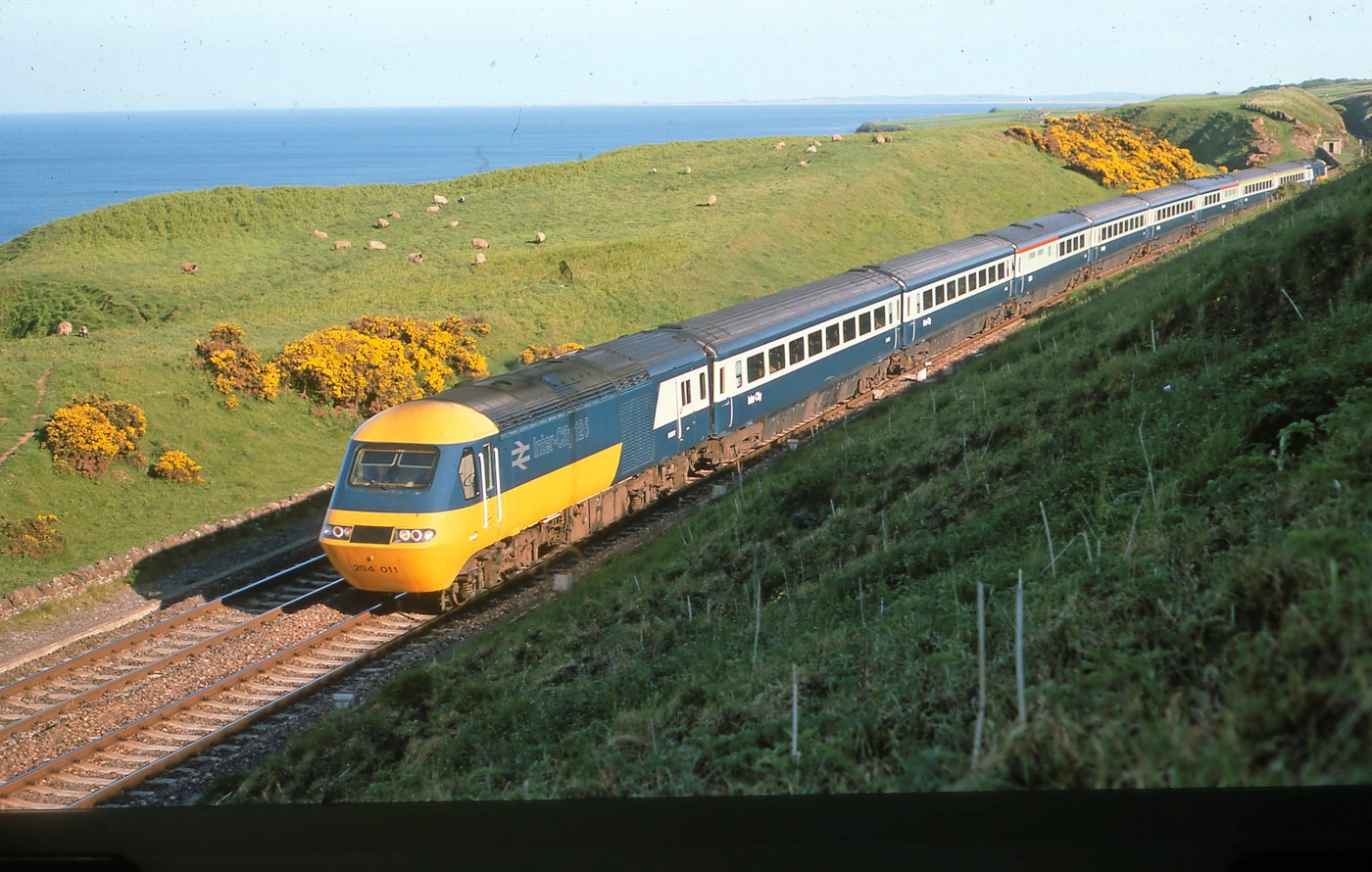
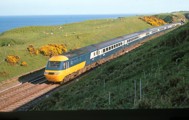
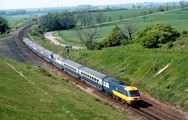
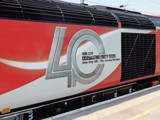
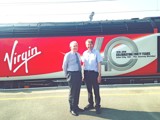
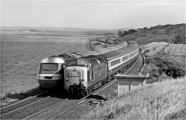
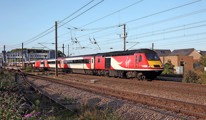
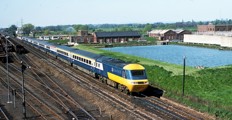
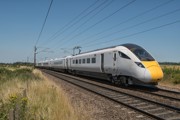
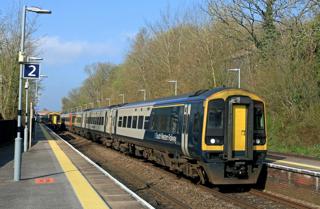
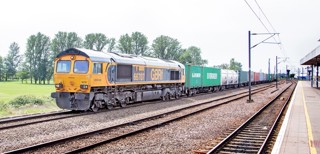
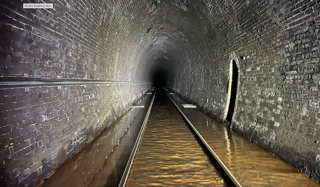
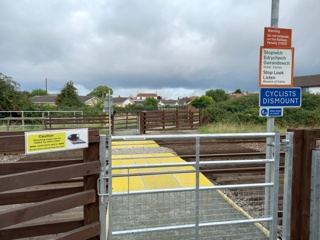












Ryan Blackie - 15/07/2018 18:38
I am a proud Crosscountry Train Manager, working HST stock is what it's all about for me! A real train for both staff and customers alike. I actively swap turns to work diagrams that contain HST work, yes, I'm an enthusiast, but working any HST set melts even the hardest heart! I love them Ryan Blackie Plymouth Train Manager.